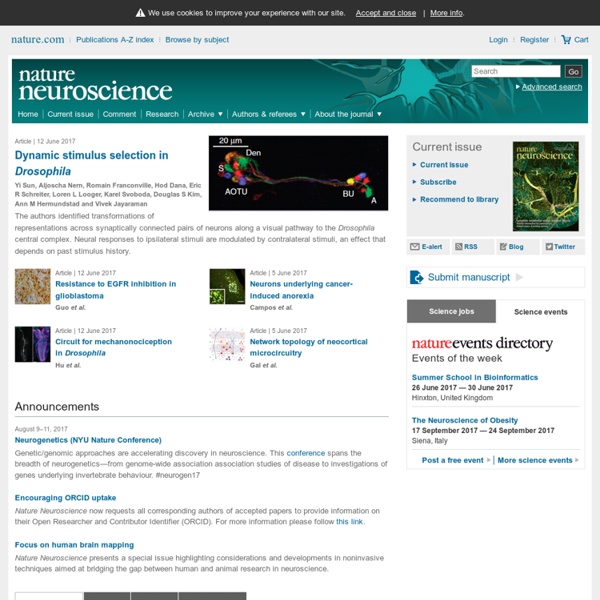



Defining developmental disorders through genetics To many people, the term “autism” suggests a specific disorder – one with characteristic and recognizable symptoms, presumably reflecting the same underlying cause. In fact, no such disorder exists. Autism refers to a variable spectrum of symptoms – including deficits in social interaction, impaired communication (especially a delay in developing language), narrow, restricted interests and stereotyped behaviours. Any one child who is diagnosed with autism may show only some of these symptoms. There is a wide range of IQ in autism, including very high levels seen in what has been known as Asperger’s syndrome, but the average is about 70. Psychiatrists have long recognized this variability and use the term “autism spectrum disorder” to encompass the entire range. This approach has already been used to identify mutations in genes on the X chromosome in autism or schizophrenia cases but can now be extended to the entire genome. This knowledge is tremendously useful in several ways.
Nature Publishing Group : science journals, jobs, and information Nature Raphael Lis, Charles C. Karrasch, Michael G. Poulos, Balvir Kunar, David Redmond, Jose G. Neuron - Mechanisms and Function of Dendritic Exocytosis To view the full text, please login as a subscribed user or purchase a subscription. Click here to view the full text on ScienceDirect. Dendritic exocytosis is required for a broad array of neuronal functions including retrograde signaling, neurotransmitter release, synaptic plasticity, and establishment of neuronal morphology. While the details of synaptic vesicle exocytosis from presynaptic terminals have been intensely studied for decades, the mechanisms of dendritic exocytosis are only now emerging. Register an Account If you do not have an account, create one by clicking the button below, and take full advantage of this site's features.
Coloured hearing in Williams syndrome The idea that our genes can affect many of the traits that define us as individuals, including our personality, intelligence, talents and interests is one that some people find hard to accept. That this is the case is very clearly and dramatically demonstrated, however, by a number of genetic conditions, which have characteristic profiles of psychological traits. Genetic effects include influences on perception, sometimes quite profound, and other times remarkably selective. A recent study suggests that differences in perception in two conditions, synaesthesia and Williams syndrome, may share some unexpected similarities. Williams syndrome is a genomic disorder caused by deletion of a specific segment of chromosome 7. Due to the presence of a number of repeated sequences, this region is prone to errors during replication that can result in deletion of the intervening stretch of the chromosome, which contains approximately 28 genes.
ActionBioscience - promoting bioscience literacy Fundamental Biosciences Life sciences include disciplines of science that are concerned with the scientific study of life – including microbes, plants, and animals, including humans. Biology is an umbrella term for the natural sciences that study life, with the other life sciences serving as subfields. Also, in the area of Life sciences, we aim to promote the understanding of biodiversity of life and improve bioscience literacy to increase global ecological consciousness and promote bioscience education. Goals and Features of Bioscience on ICWB.com To achieve the beforementioned aims, this section features articles written by scientists, scientific educators and science students on a variety of bioscience-related subjects. The record shows time and again that one person or a small group can awaken the public to the importance of an issue and bring about a startling change in the direction of a society.Hal Mooney. Inspired by the American Institute of Biological Sciences (AIBS)
Neuroscience Neuroscience is the scientific study of the nervous system.[1] Traditionally, neuroscience has been seen as a branch of biology. However, it is currently an interdisciplinary science that collaborates with other fields such as chemistry, computer science, engineering, linguistics, mathematics, medicine and allied disciplines, philosophy, physics, and psychology. It also exerts influence on other fields, such as neuroeducation[2] and neurolaw. The term neurobiology is usually used interchangeably with the term neuroscience, although the former refers specifically to the biology of the nervous system, whereas the latter refers to the entire science of the nervous system. Because of the increasing number of scientists who study the nervous system, several prominent neuroscience organizations have been formed to provide a forum to all neuroscientists and educators. History[edit] The study of the nervous system dates back to ancient Egypt. Modern neuroscience[edit] Human nervous system
Tunes on the brain: Luciana Haill's EEG art This article was taken from the September issue of Wired magazine. Be the first to read Wired's articles in print before they're posted online, and get your hands on loads of additional content by subscribing online Luciana Haill wants to peer inside your mind -- but don't worry, it's all in the name of art. In her “neuro-feedback” performances, the 37-year-old from East Sussex uses electroencephalography (EEG) to detect her (or a volunteer’s) brain activity. “The left and right sides of thebrain can independently control eight different tracks,” she says. And it's not just music: recently Haill has used EEG to live-edit video. Having become fascinated with brain scans as a teenager while being treated for meningitis, she read about EEG in a 1993 issue of Wired US.